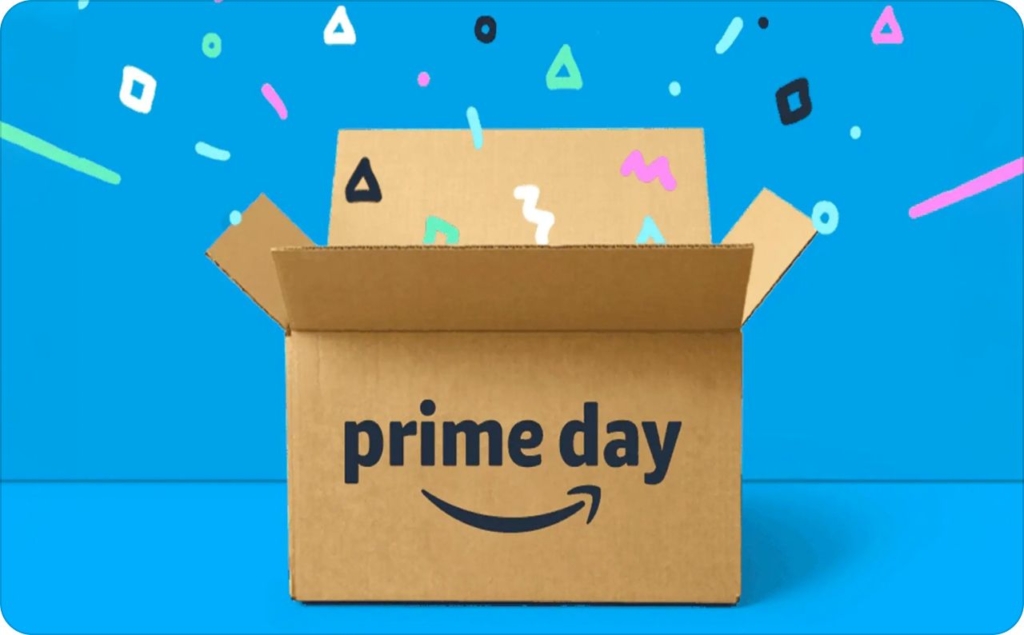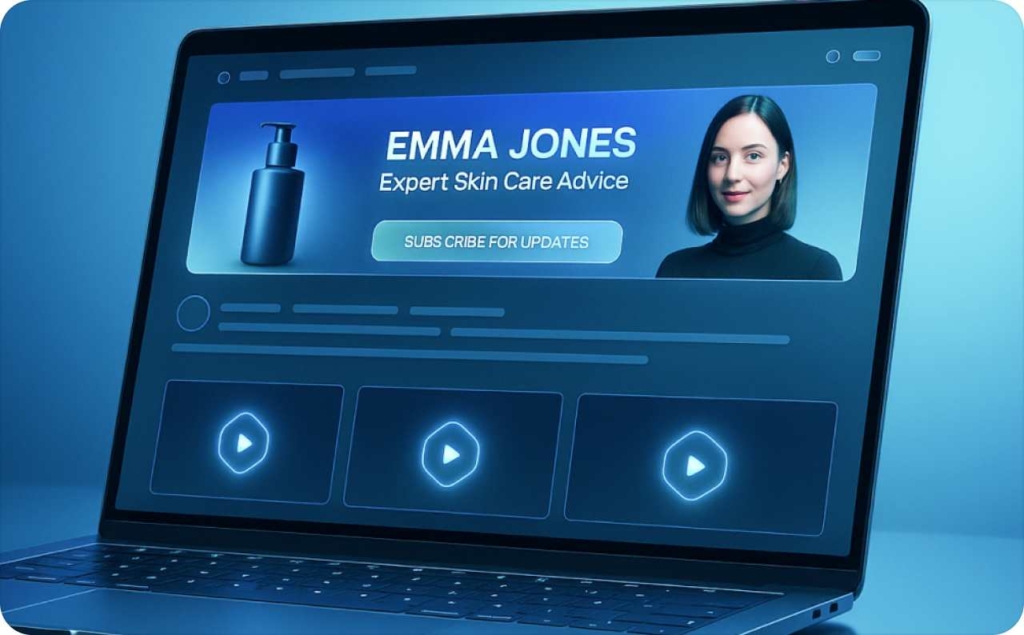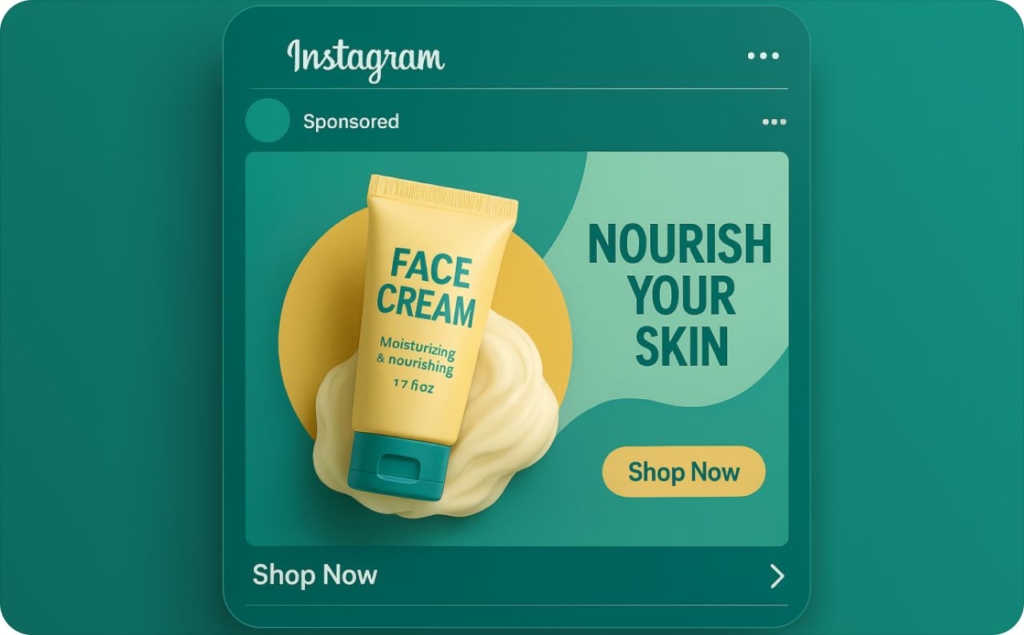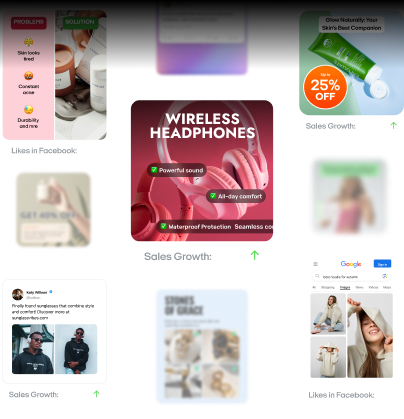30 advertising appeals for your campaign and how to use them effectively
Want to know which advertising appeals truly drive action? Zeely AI breaks down 30 powerful advertising appeal types with data-backed insights for effective campaigns.
What are advertising appeals?
Advertising appeals are persuasive patterns you use to make people notice, care, and act. In 2025, video leads the content mix, with 46% of marketers calling it their most important format, so your appeal choice inside each asset matters.
A clear cue grabs attention and guides behavior. The Elaboration Likelihood Model explains two routes. You persuade through the central route with facts, benefits, and clarity, or through the peripheral route with social proof, visuals, music, and credibility. Map each appeal to AIDA: hook attention, build interest, create desire with proof, and drive action with value and urgency.

30 proven types of advertising appeals
Advertising appeals are not all created equal. Decades of research in advertising psychology confirm that certain patterns — like fear, humor, scarcity, and social proof — consistently drive memory and behavior. According to Nielsen’s 2025 Annual Marketing Report, 54 % of global marketers plan to cut ad spending, which makes choosing proven emotional appeal in advertising even more critical for its efficiency.
Classic advertising appeals
- Fear appeal
Fear appeals drive action by emphasizing a credible threat while providing a clear solution. A strong example is Gen/Norton’s 2025 “Phishing Costs” campaign, which highlighted how online scams drain billions of dollars each year—then immediately offered users free security scans as a safeguard.
To execute effectively:
- Use verifiable statistics to build credibility
- Provide a simple next step so users know exactly how to protect themselves
- Maintain balanced framing — avoid exaggerated doom scenarios, trauma-bait tactics, or unsafe claims
Excessive fear can backfire. Platforms actively penalize manipulative or unsafe content, while users tend to disengage when messaging feels exploitative rather than empowering. The most effective fear appeals balance urgency with clarity, credibility, and reassurance.
- Humor appeal
Humor appeals capture attention by making audiences laugh and keeping your brand top of mind. A strong example is Wendy’s “National roast day” campaigns on Twitter and TikTok, where the brand playfully roasted users and competitors while promoting menu items.
To execute effectively:
- Tie humor directly to your product benefit so the joke strengthens recall
- Keep tone light, relatable, and culturally relevant
- Track video shares and completion rates — true success means organic virality and above-average brand mentions
Avoid off-topic jokes, offensive stereotypes, or cultural missteps. Humor that doesn’t connect with the audience or the product risks backlash instead of engagement. The most effective humor appeals balance fun with brand clarity and resonance.
3. Urgency appeal
Scarcity appeals drive urgency by creating a clear fear of missing out. A strong example is Amazon’s Prime Day campaigns, which pair countdown timers with real-time stock updates to push faster decisions.
To execute effectively:
- Use genuine deadlines and accurate inventory so urgency feels authentic
- Highlight limited-time offers with transparent messaging
- Monitor conversion rate — true success shows measurable sales spikes within the promotional window
Avoid endlessly recycled “last chance” claims or fake timers. These tactics break trust, invite negative reviews, and can lead to penalties from regulators or ad platforms. The most effective scarcity appeals balance urgency with credibility and honesty.

4. Social proof/estimonial appeal
Social proof appeals persuade by showing that real people already trust and love your product. A strong example is Glossier’s Instagram and TikTok campaigns, where customer selfies and UGC reviews were used directly in ads, often outperforming polished studio shoots.
To execute effectively:
- Feature authentic testimonials with clear permission
- Disclose influencer partnerships to maintain transparency
- Track conversion rate — success means lower cart abandonment and more add-to-cart actions
Avoid fabricated reviews or undisclosed endorsements. Regulators and platforms strictly enforce transparency and penalize fake claims. The most effective social proof appeals build credibility with authenticity and honesty.
5. Bandwagon appeal
Bandwagon appeals persuade by showing that millions of people already use or love a product. A strong example is Spotify’s global campaign celebrating 500 million listeners, which positioned the platform as the world’s music choice.
To execute effectively:
- Use specific, up-to-date numbers to keep claims credible
- Showcase community or audience size with proof (e.g., user counts, downloads)
- Monitor CTR and subscription growth — success means higher conversion when scale is emphasized
Avoid vague slogans like “everyone uses us” or inflated statistics. Overstated claims weaken trust and may trigger compliance reviews. The most effective bandwagon appeals pair credibility with clear scale.
6. Celebrity/authority appeal
Celebrity appeals borrow credibility and authority from recognizable figures. A clear case is Nike’s LeBron James 2025 sneaker launch, which boosted consumer trust in both style and performance.
To execute effectively:
- Choose endorsers who align naturally with your product and target audience
- Disclose sponsorships or partnerships clearly to maintain compliance
- Track brand recall and search lift — success means more branded queries and product sellouts
Avoid mismatched celebrities or hidden sponsorships. Misalignment reduces trust and may lead to penalties under FTC endorsement guidelines. The most effective celebrity appeals combine authentic fit with transparent partnerships.
7. Sex appeal
Sex appeals tie attraction and desire to lifestyle benefits. A classic example is Calvin Klein’s fragrance campaigns, where intimate visuals positioned scents as aspirational.
To execute effectively:
- Keep visuals tasteful and directly tied to product benefits
- Use messaging that enhances lifestyle appeal rather than distracts
- Track time-on-ad and aided recall — success means stronger engagement and brand memory
Avoid explicit imagery, objectification, or unsafe claims. Ad platforms restrict sexual content, and brands risk reputational damage when appeals feel exploitative. The most effective sex appeals balance aspiration, relevance, and tasteful execution.
8. Nostalgia appeal
Nostalgia appeals evoke positive memories that reconnect audiences with a brand. A strong example is Pepsi’s “90s Retro Can” relaunch, which paired vintage packaging with updated music and design to spark emotional recall.
To execute effectively:
- Tie nostalgia directly to product benefits so memories drive relevance
- Use cultural touchpoints (music, visuals, packaging) that resonate with your target demographic
- Track share rate and social engagement — success means higher organic buzz and community interaction
Avoid relying only on retro imagery without a real story or modern tie-in. Nostalgia without relevance risks being dismissed as a gimmick.
9. Patriotism appeal
Patriotism appeals highlight pride in origin, culture, or heritage. A clear example is Budweiser’s Super Bowl campaigns, linking the beer to national tradition.
To execute effectively:
- Showcase authentic sourcing, craftsmanship, or historic brand ties
- Use symbols responsibly and connect them to product values
- Track regional conversion rates — success means stronger performance in home or local markets
Avoid overusing national symbols or implying government endorsements. The most effective patriotism appeals blend authenticity with pride while avoiding misrepresentation.
10. Snob/status appeal
Snob appeals position products as exclusive, premium, and aspirational. A classic example is Rolex’s “Perpetual Excellence” campaigns, which frame watches as timeless symbols of luxury and achievement.
To execute effectively:
- Highlight craftsmanship, rarity, and legacy to justify exclusivity
- Focus messaging on aspirational identity and lifestyle benefits
- Track average order value — success shows higher spend per buyer and premium-tier demand
Avoid elitist tone or exaggerated superiority. Status positioning should inspire aspiration, not alienation, to maintain broad brand favorability.
11. Youth/beauty appeal
Youth and beauty appeals focus on vitality, transformation, and self-confidence. A strong example is L’Oréal Paris’ “Because you’re worth It” campaigns, which highlight visible results like fresher skin in 30 days.
To execute effectively:
- Showcase achievable improvements with realistic before/after results
- Use diverse representation to connect with broader audiences
- Track engagement rate and sentiment — success means high resonance with aspirational consumers
Avoid exaggerated claims or heavily edited imagery. Beauty advertising faces strict compliance rules, and misleading visuals quickly damage credibility. The most effective youth and beauty appeals inspire confidence while staying authentic.
12. Value/price appeal
Value appeals emphasize affordability and clear savings. A strong case is Walmart’s “Everyday low prices” campaigns, which highlight transparent pricing across categories.
To execute effectively:
- Be upfront with total costs, discounts, and flexible terms
- Frame affordability as part of long-term value, not just short-term deals
- Track ROAS and CPA — success means lower acquisition costs and repeat purchases
Avoid drip pricing, hidden fees, or fine-print disclaimers. These tactics damage trust, attract negative reviews, and can trigger consumer protection actions. The most effective value appeals combine savings with reliability.
13. Green/environmental appeal
Green appeals highlight sustainability and eco-friendly practices. A strong example is Allbirds’ “Sustainable from the Ground Up” campaign, which showcased recycled materials and carbon labeling.
To execute effectively:
- Use certifications and transparent impact reporting to prove claims
- Align messaging with consumer values around climate and responsibility
- Track brand favorability — success means stronger engagement with eco-conscious audiences
Avoid vague “eco-friendly” slogans without evidence. Greenwashing damages reputation and draws regulator scrutiny. The most effective environmental appeals connect sustainability to tangible product benefits.
14. Health/safety appeal
Health and safety appeals emphasize protection and wellness. A clear example is Dyson’s air purifier campaigns, which promoted “removes 99.9% of allergens” to target family households.
To execute effectively:
- Support health claims with certifications and lab-tested results
- Keep messaging clear, simple, and focused on protection benefits
- Track conversion rate — success means higher sales among parents and allergy-sensitive audiences
Avoid unverifiable medical promises or exaggerated claims. Health-related ads face strict scrutiny from platforms and regulators, and misleading content can lead to takedowns or fines.
15. Lifestyle/slice-of-life appeal
Lifestyle appeals connect products to everyday scenarios people recognize. A strong case is HelloFresh’s “Dinners in 20 minutes” ads, which showed busy parents solving mealtime stress.
To execute effectively:
- Cast people who mirror your target demographic
- Place the product naturally into real routines and daily stories
- Track engagement and dwell time — success means audiences resonate and self-identify with the scenario
Avoid generic stock imagery or unrealistic portrayals. Audiences disengage when campaigns feel staged instead of authentic.
16. Informational/reason-why appeal
Informational appeals persuade with clear product facts and benefits. A strong example is YETI’s product ads, which explained “triple-layer insulation keeps drinks cold for 12 hours.”
To execute effectively:
- Focus on one standout claim and support it with proof
- Use product visuals or diagrams to simplify the message
- Track CTR — success means higher click-through rates and lower bounce rates
Avoid overloading creatives with technical details or cluttered disclaimers. Too much information reduces clarity and weakens impact.
17. Problem–solution appeal
Problem–solution appeals frame a clear pain point and present your unique solution. A strong example is HubSpot’s “Stop losing leads” campaign, which demonstrated automation fixing sales inefficiency.
To execute effectively:
- Lead with the customer’s frustration in plain language
- Position your unique selling proposition (USP) as the proven remedy
- Track conversion rate — success means higher demo bookings and trial starts
Avoid vague “all-in-one” promises or generic fixes without proof. Strong problem–solution appeals require credibility and specificity to resonate.
18. Comparative appeal
Comparative appeals highlight differences against competitors. A strong example is Apple’s “Shot on iPhone” campaigns, which positioned iPhone cameras above Samsung with side-by-side quality comparisons.
To execute effectively:
- Use verifiable, like-for-like comparisons
- Focus on a single, differentiated feature to avoid overwhelming viewers
- Track CTR and branded search lift — success means more clicks and brand-specific queries
Avoid unsourced superiority claims, trademark misuse, or misleading comparisons. These open brands to lawsuits and ad platform rejections.
Contemporary digital triggers
Then, the media environment demands fresh thinking. Gartner’s 2025 Marketing Predictions highlight how GenAI-savvy content and emotional connection are reshaping attention — marketers must pivot from just what they say to how they feel to algorithms and audiences.
19. Logical appeal
Logical appeals persuade with facts, data, and case studies, appealing to the rational side of decision-making. A strong example is Salesforce B2B ads showing “27% lower customer acquisition costs” achieved through automation. These campaigns work because business buyers rely on ROI calculations, benchmarks, and clear proof before committing.
To execute effectively:
- Use charts, calculators, or visualized data that simplify complex benefits
- Lead with clarity and proof, not vague claims
- Track lead quality and demo completions — success means more qualified sign-ups at lower cost
Avoid cherry-picked stats or unverifiable numbers. In data-driven markets, credibility and accuracy determine whether logical appeals resonate.
20. Ethical appeal
Ethical appeals build trust by aligning your brand with values, responsibility, and transparency. A memorable example is Patagonia’s “Don’t buy this jacket” campaign, which asked customers to reduce consumption to protect the planet. This type of campaign works because modern audiences reward integrity and brands that align with their own ethics.
To execute effectively:
- Showcase certifications, audits, or third-party partnerships that validate your claims
- Share measurable impact through sustainability reports or community initiatives
- Track brand loyalty and retention — success means repeat purchases and stronger advocacy
Avoid generic statements like “we care.” Consumers quickly spot virtue signaling without evidence, and it can harm trust instead of building it.
21. Empathy appeal
Empathy appeals connect by recognizing real struggles and showing authentic support. Example: Headspace ads that acknowledge stress and offer guided meditation solutions. These campaigns work because audiences feel seen and understood, which strengthens emotional bonds with the brand.
To execute effectively:
- Mirror customer pain points using their own language and lived experiences
- Position your product as a helpful solution rather than exploiting the problem
- Track saves, comments, and long-term subscriptions — success means stronger resonance and retention
Avoid trauma-bait or exaggerated hardship. Overstating empathy feels manipulative and reduces credibility, especially in sensitive industries like healthcare or finance.
22. Aspiration appeal
Aspiration appeals inspire progress, achievement, and self-improvement. A strong case is MasterClass campaigns with Serena Williams, inviting audiences to “learn from the best.” These ads succeed because they connect dreams and role models with achievable steps, motivating action.
To execute effectively:
- Highlight realistic milestones and success stories
- Present relatable role models who inspire without feeling out of reach
- Track high-intent leads and enrollments — success means motivated, qualified sign-ups
Avoid exaggerated “overnight success” promises or bold income claims. Aspiration must balance inspiration with credibility to maintain trust, especially in regulated industries like education or finance.
23. Romantic appeal
Romantic appeals link products to love, intimacy, and shared experiences. A strong example is Airbnb Valentine’s ads, showcasing romantic getaway rentals for couples. These campaigns succeed by tying the brand to emotional connection and memorable moments.
To execute effectively:
- Naturally link your product to couple-focused occasions or relationship milestones
- Use inclusive casting and storytelling to resonate across diverse audiences
- Track seasonal bookings and engagement — success means visible spikes during romantic campaigns
Avoid outdated stereotypes or narrow portrayals of romance. Inclusivity broadens reach and drives stronger emotional resonance with modern consumers.
24. Adventure appeal
Adventure appeals highlight novelty, exploration, and discovery. Example: The North Face “Never Stop Exploring” ads, which feature rugged landscapes and authentic adventurers. These campaigns resonate because they awaken curiosity and connect brands to aspirational lifestyles.
To execute effectively:
- Use immersive visuals and aspirational copy that place the viewer in the story
- Highlight clear product benefits tied to exploration or freedom
- Track click-outs to itineraries or gear pages — success means high engagement and intent.
Avoid unsafe depictions or unrealistic claims about locations or product performance. Consumers value adventure but demand honesty and responsibility.
25. Altruism appeal
Altruism appeals link purchases to giving back. A classic example is TOMS’ “One for One” campaign, where each purchase donated shoes to those in need. These appeals work because they allow customers to feel part of a bigger mission while shopping.
To execute effectively:
- Be specific about donation partners and measurable outcomes
- Share clear impact stories and numbers
- Track CTR and donation conversions — success means more cause-driven engagement
Avoid vague “portion of proceeds” messaging without proof. Transparency matters, and unclear charity claims can create distrust or even regulatory scrutiny.
26. Cultural/tradition appeal
Cultural appeals tie products to rituals, traditions, or heritage. Example: Coca-Cola’s Lunar New Year ads, celebrating family unity with iconic red packaging and cultural symbols. These ads work because they honor traditions while embedding the brand in moments of celebration.
To execute effectively:
- Localize language, visuals, and stories for cultural relevance
- Collaborate with cultural experts or community members for authenticity
- Track seasonal sales and engagement — success means measurable spikes during holiday or cultural events
Avoid cultural appropriation or misuse of sacred symbols. Authenticity sustains reputation, while missteps invite backlash.
27. Music appeal
Music appeals use sound and rhythm to boost recall and virality. A strong case is Oreo’s TikTok jingle campaigns, where user remixes turned into viral content. Music works because rhythm engages memory and emotion, driving shareability.
To execute effectively:
- Launch catchy, brand-aligned hooks within the first two seconds
- Encourage user-generated remixes to extend reach organically
- Track shares and audio reuse — success means content spreads beyond paid media
Avoid copyright violations or intrusive loudness. Poorly executed audio turns audiences off, while clever jingles can become cultural touchpoints.
28. Drama appeal
Drama appeals build narrative arcs that keep viewers invested. Example: Apple’s “Shot on iPhone” creator stories, spotlighting personal journeys from small beginnings to global recognition. These campaigns succeed because storytelling builds emotional depth and long-term recall.
To execute effectively:
- Structure ads in a clear three-act narrative with captions for mobile viewers
- Center stories around relatable characters and product use
- Track watch time and completion — success means audiences stay engaged until the end
Avoid dragging intros or burying the product reveal. Strong drama requires balance between story and brand visibility.
29. Shock appeal
Shock appeals disrupt expectations with bold, provocative messaging that forces audiences to stop and think. A strong example is UNICEF’s campaign asking, “Would you sell your child’s data for $1?”, which sparked debate about online privacy. These ads work because surprise and discomfort push the brain into deeper processing, increasing recall and shares.
To execute effectively:
- Use sparingly in top-of-funnel awareness campaigns
- Anchor shock to your brand’s mission and message clarity
- Track thumb-stops and discussion rate — success means attention without bans
Avoid unsafe imagery or misleading controversy. The best shock appeals spark conversation while protecting brand safety and credibility.
30. Innovation appeal
Innovation appeals showcase novelty and cutting-edge features that position a brand as forward-thinking. Example: Samsung Galaxy AI camera ads (2025) highlighting real-time translation. These campaigns succeed because they tie innovation to practical benefits customers want now.
To execute effectively:
- Demonstrate features with live demos and simple explanations
- Tie innovation to customer needs rather than abstract “future tech” claims
- Track clicks to spec sheets and product trials — success means stronger adoption by early tech adopters
Avoid vague slogans like “the future is here” without substance. Innovation appeals resonate most when benefits are tangible and easy to understand.
How to choose the right appeal
Choosing the right advertising appeal is about matching your message to how people make decisions. The FCB Grid is a classic marketing framework that helps you see whether your audience is deciding with their head or heart and whether your product demands deep consideration or is an easy buy.
When you pair this with the familiar marketing funnel (awareness → interest → desire → action), you get a clear roadmap for which appeal works best, when, and on which channel.
High-involvement thinking
If you sell something complex, like software or financial services, people want proof.
- Best appeals:Logical, informational, problem–solution, comparative
- Where to use: Google Search, LinkedIn, YouTube explainers
- Why: These buyers ask tough questions and need data, case studies, or side-by-side comparisons before they trust you
High-involvement feeling
If you’re in health, real estate, or luxury, choices are emotional but high-stakes.
- Best appeals: Fear with solutions, empathy, ethical, storytelling
- Where to use: Long YouTube ads, OTT/CTV, Instagram Reels
- Why: People want to feel safe, inspired, or moved. Emotional storytelling builds trust faster than discounts
Low-involvement thinking
For everyday items like snacks, retail deals, or subscriptions, people decide quickly.
- Best appeals: Price, scarcity, bandwagon, social proof
- Where to use: Display ads, TikTok Shop, Google Performance Max
- Why: Simple numbers and urgency drive impulse decisions when risk is low
Low-Involvement feeling
Fashion, beauty, and entertainment are usually emotional, low-risk buys.
- Best appeals: Humor, nostalgia, youth/Beauty, music, romance
- Where to use: TikTok, Instagram Stories, YouTube Shorts
- Why: These audiences scroll for fun and respond to emotional cues, trends, and creative flair
How to use:
- Top of funnel awareness: Hook people with humor, lifestyle, or bandwagon ads that stop the scroll
- Middle of funnel consideration: Prove your value with testimonials, informational appeals, or problem–solution formats
- Bottom of funnel conversion: Seal the deal with price, scarcity, or comparative appeals that remove the last doubts
How to use AI to generate ads
If you run a small business and your audience is busy, distracted, and often hard to reach, Zeely gives you an edge with its AI ad generator that produces static and video ads in minutes, without needing a designer or agency.
With automated ad creation tailored to your brand voice, you can launch professional campaigns faster and capture attention before competitors.
Why Zeely AI changes add marketing
Businesses face challenges like limited budgets, time pressure, and rising ad costs. Zeely solves this with high-converting ads designed for real growth.
- 100+ niche-specific templates pre-built for your sector, so ads look professional from day one
- AI-written ad copy with headlines, offers, and CTAs generated with AIDA and PAS frameworks, tailored to your brand voice
- 500+ realistic AI avatars with human-like presenters for instant UGC-style video ads
- Simple creative editing with swap text, adjust layouts, and customize visuals in seconds
- Integrated publishing allows to post directly to Meta, Instagram, and Facebook from the platform
- Script generator with step-by-step storytelling to keep ads engaging and conversion-focused.
Zeely is trusted because it delivers speed, clarity, and results. Instead of waiting weeks for agencies, you can generate and launch powerful campaigns yourself. Start generating AI-powered ads today and grow your business.
Also recommended



